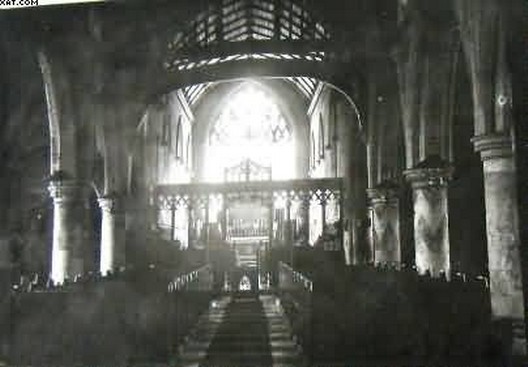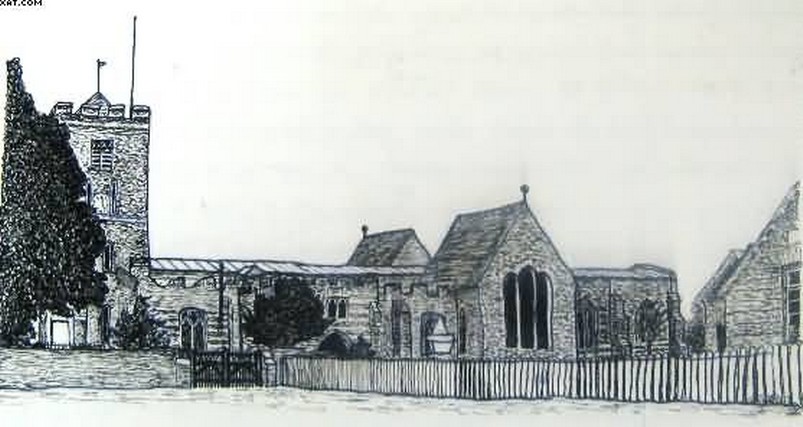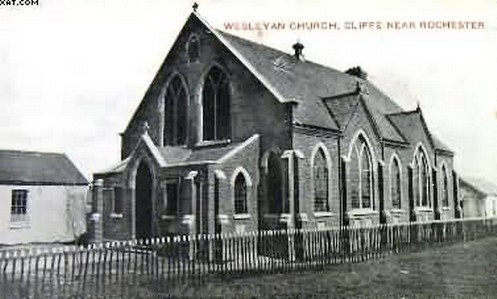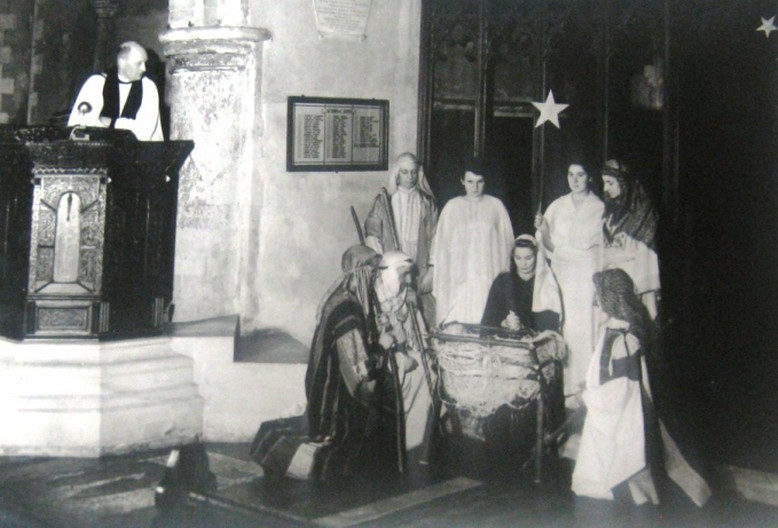Places of Worship
The Parish Church
The oldest building in life is its exceptionally fine church, mentioned in Domesday Book. It is dedicated to St. Helen, the mother of Constantine the Great, first Christian Emperor of Rome. She is said to have discovered the cross on which the Saviour suffered.
The original church has gone, with the possible exception of a rough doorway which may be Saxon. This can be seen on the outside of the north wall. A Norman church followed, the chancel arch of which remains.
The present nave, transepts, and lower part of the tower date from 1260. The chancel was rebuilt, and the aisles widened, about 1350. The belfry is 15th century and the top of the tower is modern.
The chief treasure of the church is a silver-gilt paten, dated 1525, one of the finest mediaeval patens in existence. The beautifully carved pulpit was “carefully repaired” and moved to its present position in 1875. The hour glass bracket attached to it, dated 1635, is an extreme rarity.
The chancel is very fine. The ancient high-pitched roof and beautiful East window were destroyed by Rector G. Green in 1732. He recorded his misdeed in the register book. The church then had a flat roof until the 19th century when it was by stages restored to its original height.
 In the chancel are six ancient Miserere seats. Part of the 15th century Rood screen remains, and a doorway which gave access to the Rood can be seen in the wall above it. A lower doorway has been blocked, concealing the little stairway which led to the Rood loft. The walls of the transepts were once bright with colour, and traces of these mural paintings have been carefully preserves. On several of the pillars are bold chevron designs.
In the chancel are six ancient Miserere seats. Part of the 15th century Rood screen remains, and a doorway which gave access to the Rood can be seen in the wall above it. A lower doorway has been blocked, concealing the little stairway which led to the Rood loft. The walls of the transepts were once bright with colour, and traces of these mural paintings have been carefully preserves. On several of the pillars are bold chevron designs.A brass tablet on a pillar near the organ records the gift of John Browne to found a school, and on the floor nearby are brasses to the memory of the Faunce family.
A list of Rectors from 1229 may be seen on the north wall at the entrance to the chancel. Many of these fifty-seven Rectors subsequently filled high offices in the Church. The library of Rector Charles Burney (1815 – 1818) was bought for the nation for £13,500. A curate, Rev. Arthur Broome, called the meeting in London in 1884 which led to the founding of the Royal Society for the Prevention of Cruelty to Animals.
Repairs and improvements to the interior of the church have been carried out from time to time. The old box-pews were replaced by open seats in 1874, and the East window restored to its former beauty in 1884.
The church bells were taken down and recast in 1862, and two were added in 1864, making a fine peal of eight bells. A set of “Rules” displayed in the belfry about 1870 – 1880, shows that fines of 2d and 3d were imposed for a number of offenses e.g. for using “improper language”, for not attending the requisite number of services, and for not sending an apology for absence. At this time the ‘foreman’, (now called the captain) was Mr. John Elford, a nephew of whom still lives in Cliffe, and his team of ringers were James Burke, William Clarke, William Holden, Thomas McCarthy, John Moon, James Price, William Spackman, Walter Stanley, William Waghorn, Stanley Wood and John Mannouch (Steeple Keeper.)
A hundred years ago both clock and sundial could be seen on the south wall of the tower. The churchwarden accounts contain many references to the cost of maintenance, including “Beer when put up, and fixing the hand 2/-. “ “Rearing and falling the Ladder 3/-. “ An interesting entry made by the churchwardens in 1835 on the flyleaf of an account cook records that “Cliffe Church Clock repaired by Subscription having been still 37 years.” The cost was £40.
The church registers date from 1558. One of the early entries refers to the threat of the Spanish Armada. “July 25th 1588. The camp begane at Tilbury in Essex.” There is an entry concerning Penance in 1577, and in “1679 John Browne was buried in linen and the forfeit was paid 50/- to the poor and the rest to the Informer.”
The existing accounts kept by the Churchwardens and Overseers of the Poor begin in 1728. These books are full of fascinating information, and throw much light on the life in the village in by-gone years. In this little community lived and died James ye Fidler, Blinde Moall, Goodey Dorman and Goodman Milton. “A payer of sheets for ye Parish bead” cost 6/6. “Going the bounds of the Parish” was an annual event, and the man who led the way was paid £1 – 0 – 0 or more. “Vermin were paid at the following rates:- foxes, otters, badgers 1/- each, pole-cats, hedgehogs, 4d each; stoats and moles, 2d each; sparrows 3d – 6d a dozen. In 1820, the price was 1d each for old sparrows and ½d each for young ones. Payment was made for 3892 of them. In 1808 there were many payments for killing dogs, and one entry “For killing Mad Dog, 5/-“may explain this curious slaughter.
Careful account was kept of the collection of the rates and their “disbursement” for the relief of the poor of the parish, “likewise any Casual poor that fall on the said parish of Cliff in the Course of one year – likewise all Surgery, broken bones and Casual Midwifery.” The entries include “a pair of stays for Ann Gibbs, 9/6,” “cutting of young packman’s hear and gave him a wig 3/-“and a “wooden leg for Moore, £1 – 2 – 3.” “Shaveing Jno Butchers head cost 2d, and a Mts. Cole was paid 4/8 for her Donkey carrying Kitt Betts to the Doctor.”
Here in the Parish Church chest these handwritten books are a true record of the way of life of the common people who have no memorial, but in their day were a vital part of this parish of Cliffe.

St. Helen’s Church, as it appeared between 1868 and 1884, by which time the Nave’s and Aisles’ roofs had been restored to the pitch of the Transepts roofs.
The Methodist Church

The Methodist Church is a fine building situated in the heart of the village on a site immediately adjoining that of the original Wesleyan Church. The old building has been in existence for more than a hundred years, and after the opening of the ‘new’ Church in 1902, was used for some years as an infants’ school. It is now used as a Temperance Club. At the rear of the Church is the Wesleyan Sunday School, opened in 1909.
In Turner Street is the Christian Mission Hall. It was founded in 1891, and has maintained a comparatively large and faithful following ever since.
The Plymouth Brethren Meeting Hall is to be found in Reed Street.

St. Helen’s Church – view of interior showing the Jacobean pulpit, dated 1636, the list of Rectors of the Parish, and the memorial tablet of Revd. Charles Burney.
